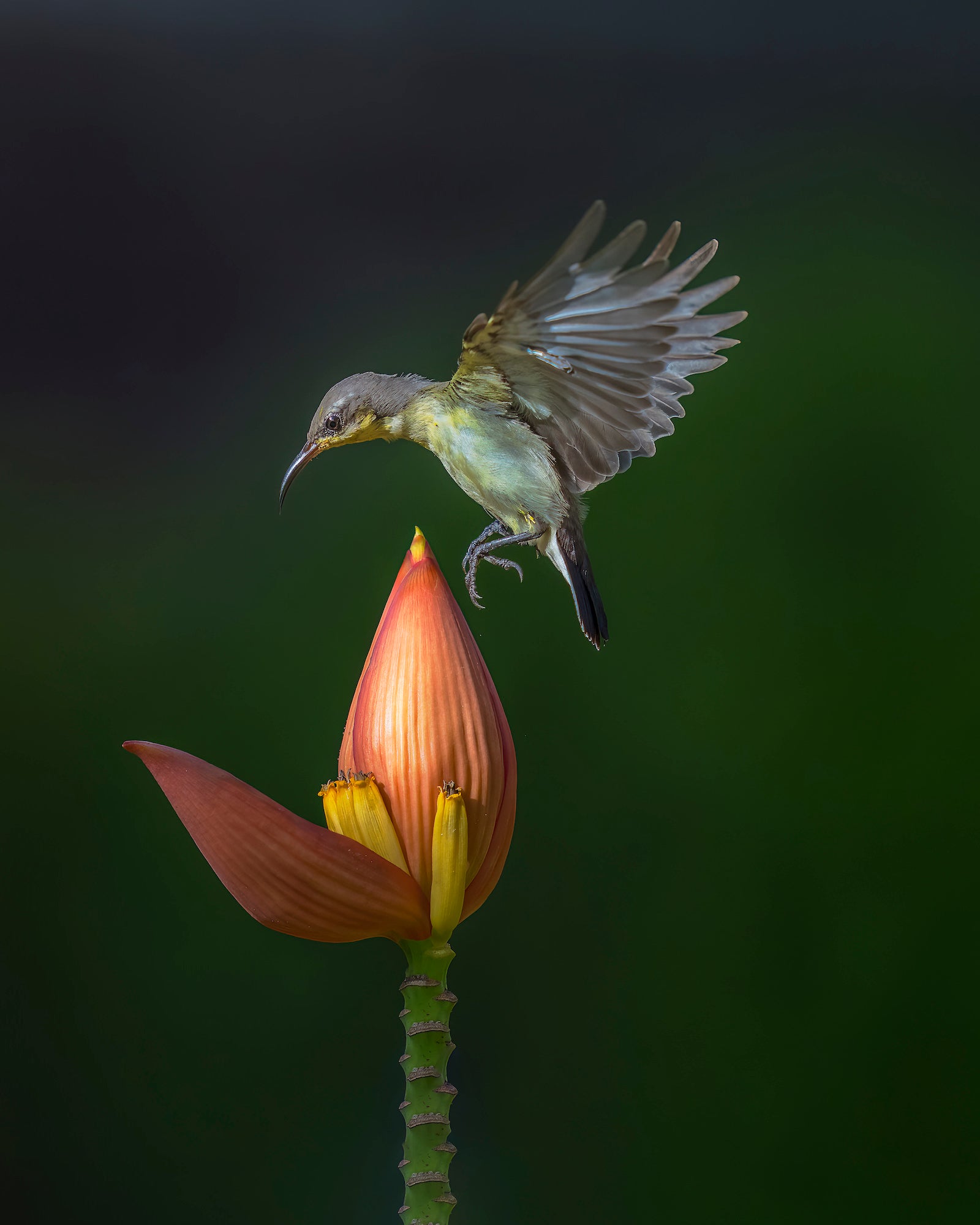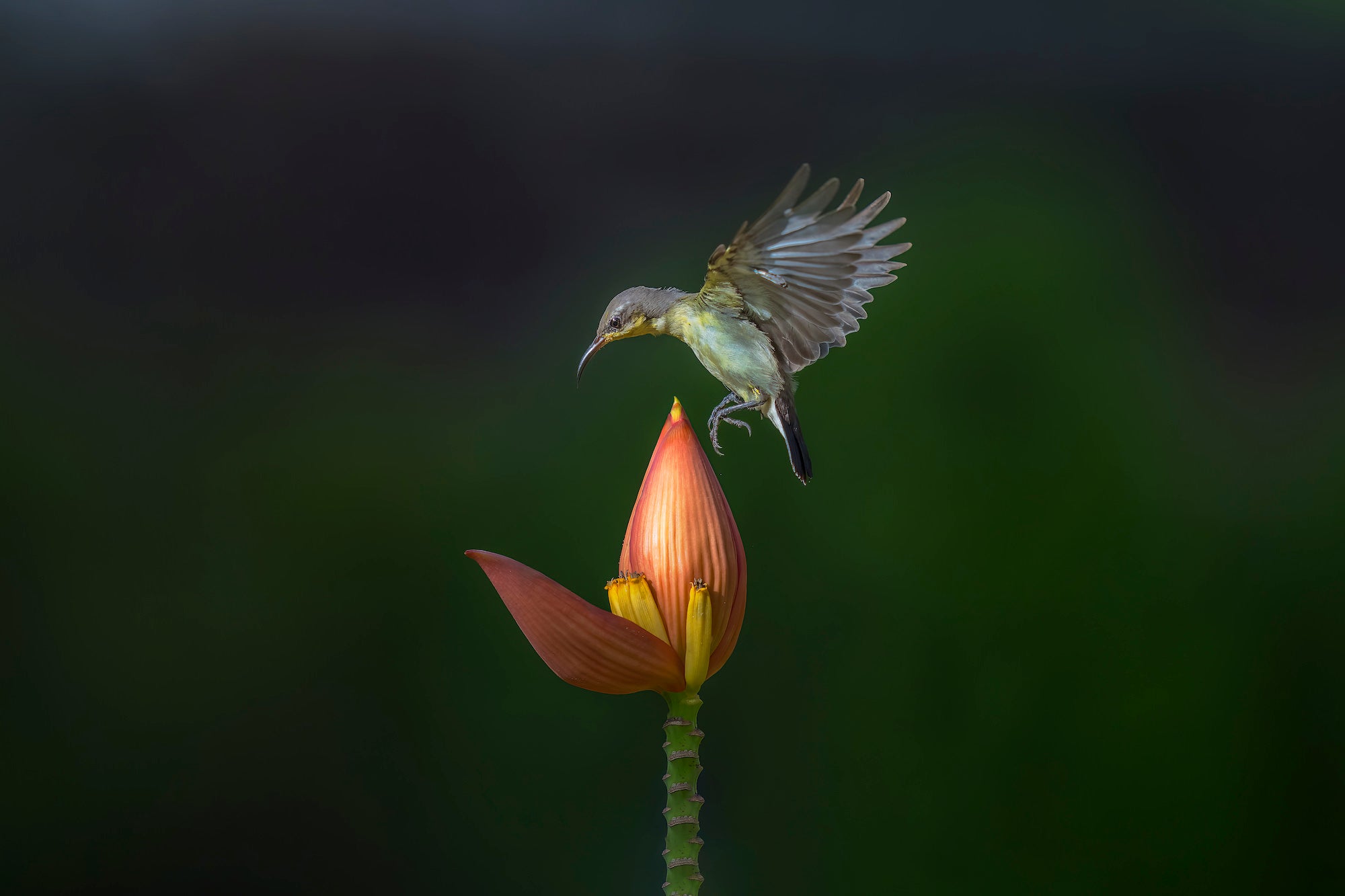In addition to being a passionate photography hobbyist, Swarnendu Chatterjee (@swarnendu.wildlife) is a full time IT professional and machine learning engineer. “Wildlife photography is more than a passion to me,” he explains, “it is a way to express my creativity and connect with the world around me. I believe that everyone has the power to make a difference, and I use wildlife photography as a way to express the language of these wild lives.” As you scroll through his Instagram account, you’ll see endless breathtaking wildlife imagery like the photo we're spotlighting here. Swarnendu shares the story behind the shot below, and how uses photography as a meditative practice.
Product Preview – In This Article You'll Find:
–Sony Alpha 1
–Sony 400mm f/2.8 G Master

Photo by Swarnendu Chatterjee. Sony Alpha 1. Sony 400mm f/2.8 G Master. 1/6400-sec., f/2.8, ISO 800
Visualizing A Scene
I recently visited a location near Kalyani, West Bengal, India to photograph different species of birds and their activities. However, I was surprised to see the strangely beautiful scene of a female sunbird hovering over a special type of banana flower. Also, there were lots of Indian black ants so the bird was a bit hesitant so it was hovering all around the flower and was throwing away the ants to sit quietly.
The action was so beautiful that I immediately visualized the frame in my mind and set up my gear to capture it. I waited patiently for the sunbird to hover over the flower. When it finally did, I took a few shots. I am so glad that I decided to stay at the location and wait for the sunbird. It was a truly magical experience, and I am grateful that I was able to capture it on camera.

Photo by Swarnendu Chatterjee. Sony Alpha 1. Sony 400mm f/2.8 G Master. 1/6400-sec., f/2.8, ISO 800
Using Back-Button Autofocus To Dial In The Shot
For this shot, I used the Sony Alpha 1 with the Sony 400mm f/2.8 G Master lens. I chose the Sony Alpha 1 for its high-megapixel sensor and 30fps continuous shooting capabilities, and I'm impressed with its performance. The Sony 400mm f/2.8 G Master lens is also excellent, and it's my go-to lens for wildlife photography. I trust this lens because of its fast and accurate autofocus, and its ability to produce sharp images even in very low-light situations.
I used a tripod with a gimbal head to get a stable shot. As a custom button, I used back-button autofocus and used the preset function to memorize the focus in the lens. I used single-point tracking as my autofocus point, and I set my aperture to maximum open value (2.8 for my case) to get the bird in focus in low-light situations with a tolerable ISO bump up and get decent background separation with high shutter speed.
In post-processing, I only do some color corrections and adjust the highlight and shadow. I always aim for minimal editing, as I want the photograph to reflect the scene I saw with my own two eyes.
A Hobby That Combines Passion & Peace
It’s scenes like this that remind me why I love wildlife photography. As an IT professional it's a bit of a hectic life and as human beings, we need an escape from this. Nature is something that gives me that mental peace and escape. There are two options that can help me to get closer to nature. The first is traveling and the other is photography. Wildlife photography helped me in both ways. I love to travel to different locations with lots of greenery and wild touches. I always loved photography though and with wildlife photography, I started to connect with nature and its rare creations and languages as well.
This wildlife photography has taught me how to keep my mind calm and keep patience in any situation. This is not just helping me in my personal life as well as making me a better human being.
See more of Swarnendu Chatterjee's work on Instagram @swarnendu.wildlife.

